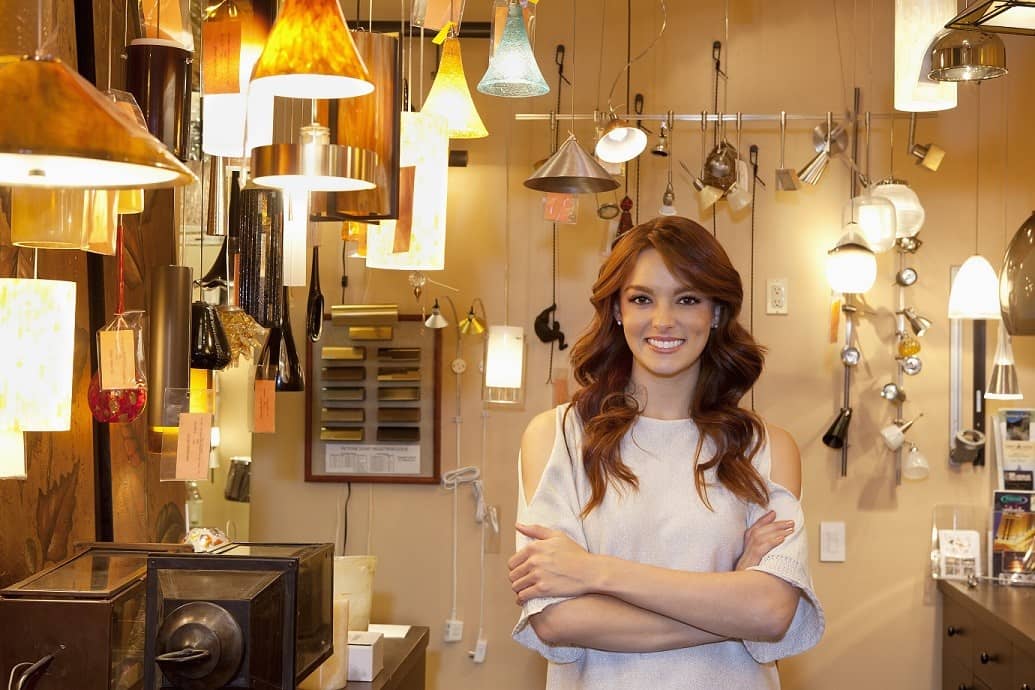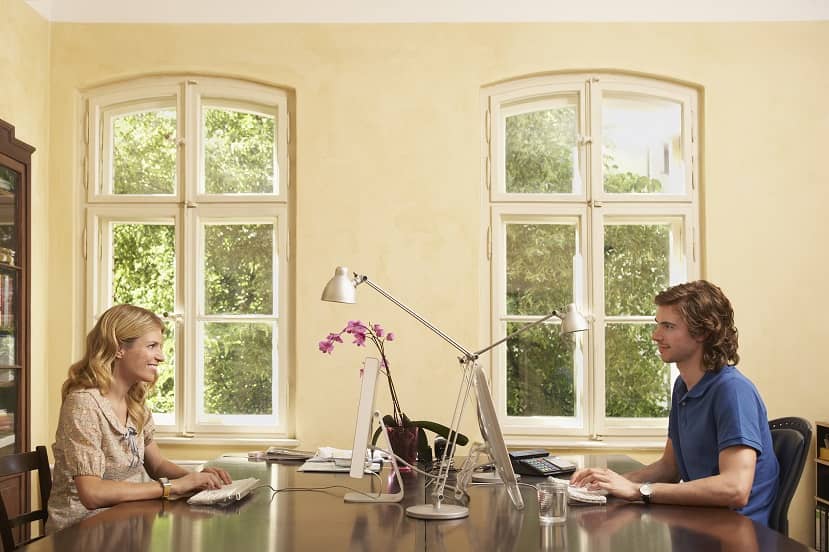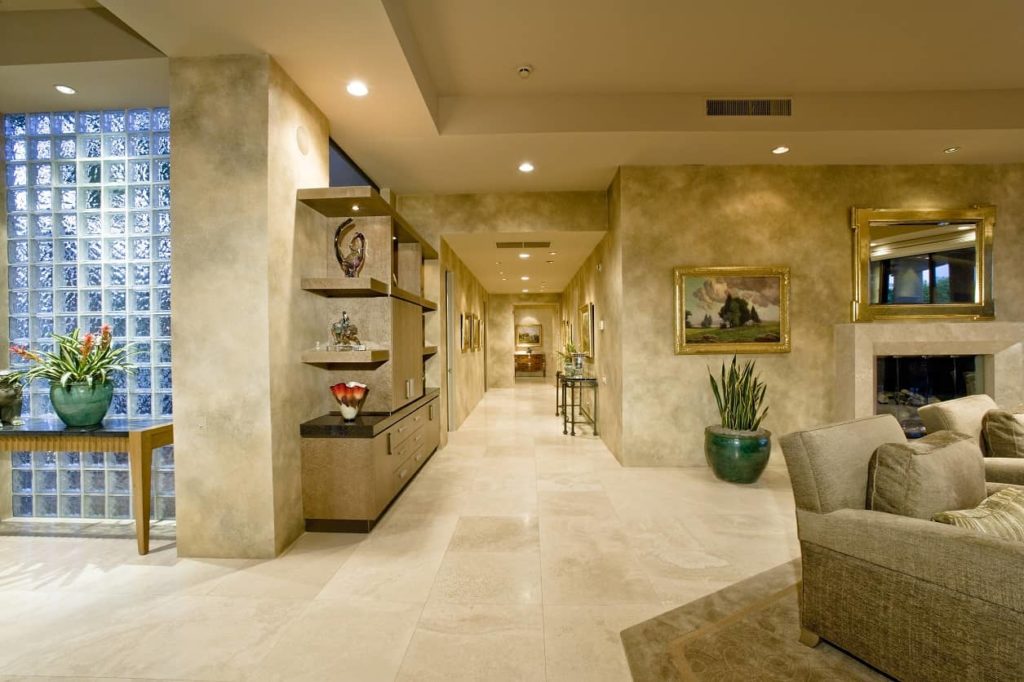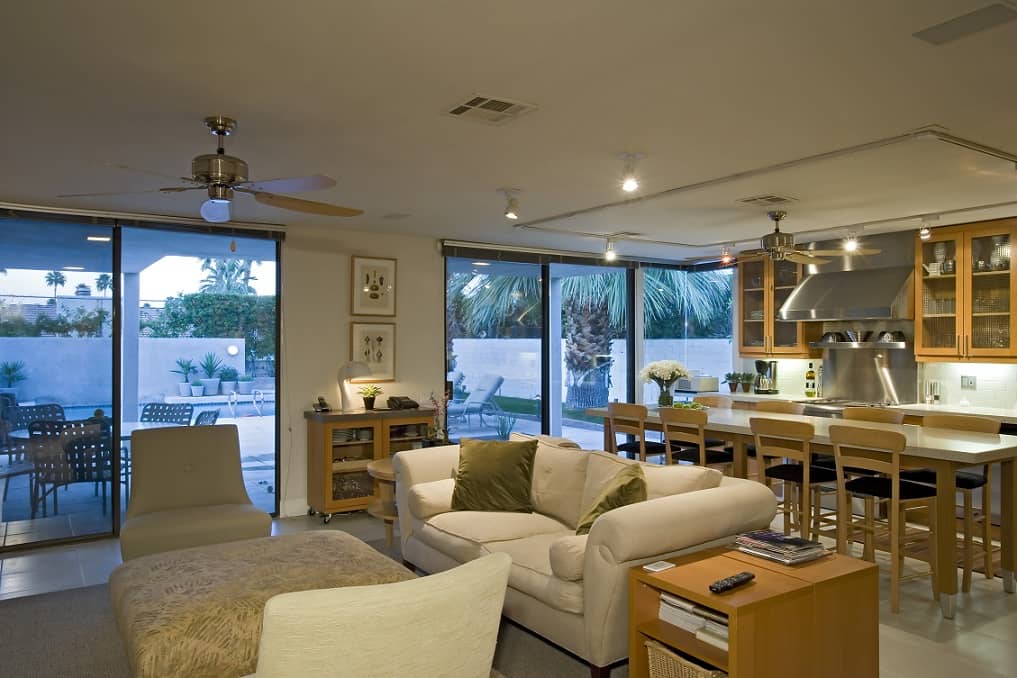Interior Design Trends for 2023: What’s in Store?

In recent years, the world of interior design has been influenced by a range of new ideas and concepts. From the rise of gender-neutral spaces to the increasing popularity of industrial interiors, there were many Interior Design Trends for 2023 and will continue into the next year. In this blog post, we’ll be exploring more about interior design trends for 2023. With so much changing all around us, it can be difficult to predict what new ideas might come along next. However, that’s why we’ve put together this list of some of our favorite predictions for what you can expect to see coming up in future home designs and commercial properties. So if you’re interested in knowing more about the potential future of interior design, keep reading!
Virtual and Augmented Reality

Virtual reality and augmented reality technologies that allow users to immerse themselves in simulated digital environments have many applications in the design industry. VR can be used to create realistic mockups of interior designs and exterior landscaping, walk-throughs for retrofit projects, and more. AR can be used to visualize furniture layouts in a room, projected onto a surface or object, or superimposed on a live image via a camera. In the coming years, it will become increasingly common to see designers use AR and VR in the design process to help clients visualize the end result. Designers may also use VR and AR to collaborate with clients remotely. VR and AR can also be used to create virtual tours of spaces that are not yet complete or to provide training for staff members.
3D Printing
3D printing is a process that creates three-dimensional objects from a digital design. It has many applications in various industries and has been used in the interior design trend, including prototyping and manufacturing custom furniture pieces. As technology advances, more sophisticated 3D printers are being designed, allowing designers to create and manufacture complex designs that were impossible to create with previous models. 3D printers have the potential to change the way designers create, collaborate, and manufacture products by enabling them to produce custom designs, quick mockups, and finished products. In the coming years, companies will likely invest in 3D printers to cut down on manufacturing costs and enable faster production of custom products. Designers can use 3D printers to quickly create mockups and prototypes of designs, reducing the need for custom drawings and hand-drawn sketches.
Smart Homes

Designers are increasingly integrating smart home technology into their projects. Some of the most common uses of smart technology in interior design include lighting systems, thermostats, HVAC systems, security systems, audio and video systems, and home appliances such as refrigerators, stoves, and dishwashers. A smart home system consists of sensors, computers, and internet-enabled devices that collect information about the home’s environment and are controlled using a smartphone or computer. Smart home technology enables users to remotely control their lighting and appliances, set and adjust the temperature, receive notifications from security systems, and more. Smart home technology is especially beneficial to age populations and people with disabilities. Designers can use smart home technology to integrate assistive devices into a home’s environment, such as a voice-command system or a touchscreen thermostat.
Collaborative Workspaces
Traditional office layouts with rows of cubicles or private offices are being replaced with open-concept designs and collaborative workspaces. Employers are seeking work environments where staff members can collaborate, share ideas, and feel comfortable expressing themselves. Open-concept offices are equipped with modern furniture, such as open-front cabinets, communal tables, and lounge or sofa areas. Open-concept offices have also become more environmentally sustainable, incorporating features like green roofs, natural light, and energy-efficient features. Highly collaborative workspaces often feature floor-to-ceiling windows, open spaces that encourage movement, and furniture that is easily reconfigurable. This can be accomplished with modular furniture, such as workstations with adjustable height, tables with multiple size options, and multi-purpose furniture like lounge chairs.
Touch-Based Interiors

Interior designers have long used visual cues such as color, texture, and pattern to communicate ideas and enhance the experience of a space. In the coming years, designers will increasingly incorporate haptic elements into their designs in the form of touch-based technology. Haptic technology includes devices that provide touch or pressure-based feedback, such as a chair that gently vibrates when a phone call is coming in. Haptic elements are incorporated into interior designs to enhance a person’s experience in a space and make it more interactive. Examples of touch-based technology in interior design include interactive tables, chairs with built-in sensors, and holographic images.
Drone
One of the most interesting developments in the world of architecture and design is the rise of drones. Traditional construction methods have been around for decades, but drones offer a whole new way to build buildings. If you’ve ever seen a skyscraper gets built, you’ll know that it can take years to finish. But thanks to drones, buildings can be constructed much faster than ever before. Drones can also be used to create 3D models of existing buildings so that architects can plan renovations. This technology can also be used to speed up the design process so that designers can create new buildings faster than ever before. With drones being such an important part of the design process, it’s likely that they’ll influence the interior design as well. After all, interior designers use their own 3D models to plan spaces, too!
Material selection
As technology becomes more sophisticated and more accessible, it’s important to consider how it will have an impact on the design of your space. For example, we’ve seen the Internet of Things (IoT) become a major trend in recent years. This includes the use of smart devices, sensors, and IoT-enabled products. With this in mind, it’s likely that more and more of these types of devices will be used in the design of our homes. This could include sensor-enabled furniture and appliances, as well as voice assistants such as Amazon Echo and Google Home. For example, sensors could be used to detect when a room has become too hot or cold. This could automatically trigger your air conditioning system to turn on. You could also use sensors to track your electricity usage or even your water flow. As we become more dependent on technology, it’s likely that it will become more intertwined with our homes.
Interior light selection

As well as the materials used in our homes, and the way we light them, will also have a major impact on the design of our interiors. We’ve seen the trend of using dimmable LEDs in many homes for a long time now, but it doesn’t look like it’s going to slow down any time soon. The Internet of Things will also play a role in how we light our homes, thanks to smart lights. For example, you could use an app to control your lights remotely. You could also control your lights using your voice, thanks to a smart speaker like an Amazon Echo or Google Home. These types of smart devices could be used to sync your lights with your music or your mood. For example, you could set your lights to change color based on the beat of your music. Or you could use your smart lights to create a certain mood, like a relaxing atmosphere.
Customized windows and doors
One of the most important parts of any design is the windows and doors that you choose for your interiors. After all, without any windows or doors, your home wouldn’t be very livable! However, there are many different styles of windows and doors that you can choose from. This includes the type of glass used within your windows. However, as technology improves, we’re likely to see new materials used for windows and doors. This could include materials that are more energy-efficient, like solar panels. It could also include materials that are more secure against weather-related damage, like UV shields. This will ensure that your windows and doors continue to be an important part of the design of your home, while also serving a functional purpose.
Other trends
There are a few other trends that we think are worth noting. These include the rise of the hosting economy and the potential for virtual reality to influence interior design. The hosting economy refers to the rise of short-term rentals, like Airbnb. This is a great way for homeowners to earn extra money by renting out their spare bedrooms or unused vacation properties. After all, it also means that homeowners are able to stay in a variety of interesting places while they travel. This has created a new type of design that is different from what we’ve become accustomed to in recent years. This type of design often includes vibrant colors and bold patterns, making it an exciting and fresh trend for interior design. Finally, there is also the possibility that virtual reality will impact the design of our homes. After all, many architects and designers are already using VR to design their buildings and spaces. If VR continues to grow in popularity and sophistication, it’s possible that it will have an impact on the design of our homes.
Conclusion
The impact of digital transformation on the interior design industry will be more visible than ever in the coming years. The new digital landscape is forcing businesses to change their strategies and adopt new ways of operation. Interior designers are responsible for creating environments that are not only comfortable but also visually appealing to occupants or visitors. The field requires creative problem-solving skills and attention to detail. In addition to an undergraduate degree in interior design, prospective designers should consider taking computer software classes or adult education courses focusing on computer-aided drafting (CAD).